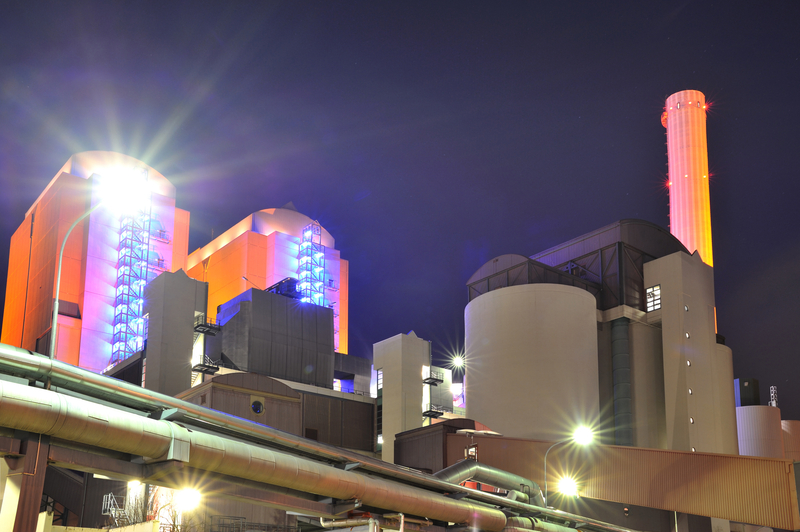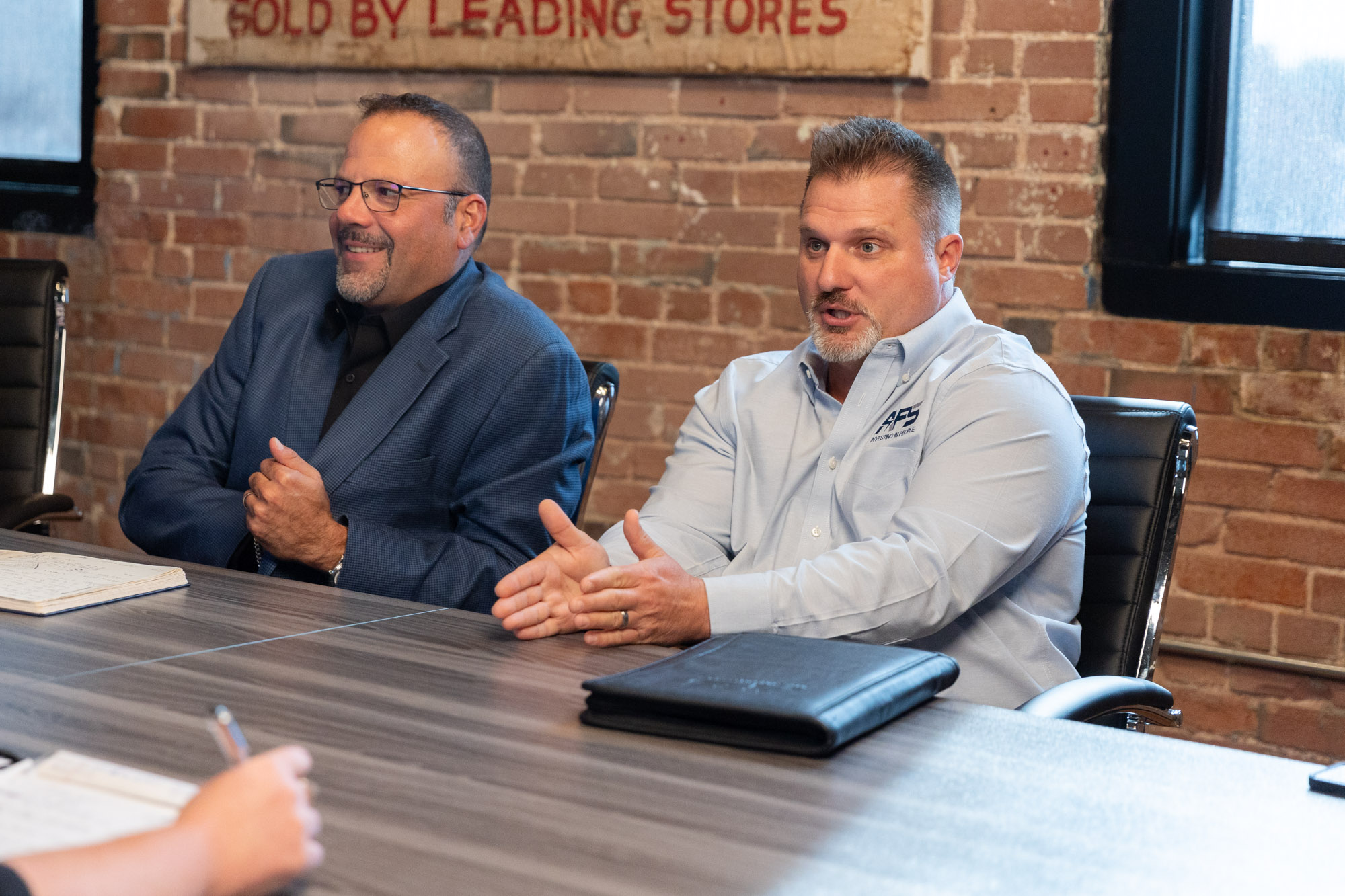
Power and Energy Outage Trends: Power and energy professionals know outage season all too well. What’s changed is its intensity, timing, and reach. Over the last 15 years, outages have grown more frequent and more severe, stretching from coastal hurricane belts to inland communities hit by extreme heat, deep freezes, flooding, windstorms, and wildfires. The pattern is no longer a short, predictable window—it’s a year-round challenge.
In this post, we analyze power and energy outage trends and what’s driving them: aging infrastructure that wasn’t designed for today’s climate, rising demand driven by heat waves and electrification, and the escalating impact of extreme weather. We’ll walk through credible data, highlight recent events like Winter Storm Uri, explore the grid’s aging backbone, and discuss the human element—how skilled labor and proactive staffing can make or break restoration timelines.
Key takeaways:
- Weather-related outages are rising in frequency and scale, and now occur across every season.
- From 2018 to 2020, 75% of U.S. counties experienced major power outages alongside severe weather, according to a Columbia University analysis.
- Aging infrastructure, record demand, and extreme weather create compounding risks that lengthen outage duration.
- Skilled labor is the critical lever for faster restoration—and partnering with specialized staffing companies helps utilities scale safely and quickly.
- Proactive planning—both operational and staffing—reduces risk, cost, and customer minutes of interruption.
I. The Evolving Challenge of Outage Season
A decade and a half ago, “outage season” usually meant a narrow window: summer storms in the Southeast, fall wind events on the West Coast, or midwinter ice in the Midwest and Northeast. That seasonality has blurred. Today, extreme heat spikes strain transformers and feeders in May. Tropical storms arrive earlier and linger later into fall. Arctic blasts can plunge deep into the South. Wildfire risk extends well beyond a few high-wind days. For crews and grid operators, this creates a longer, less predictable operational tempo.
Why outages are lasting longer and happening more often:
- Infrastructure age: Much of the grid was built 40–60 years ago, designed for historical weather norms.
- Demand growth: Record heat and electrification push peak loads beyond equipment ratings.
- Weather volatility: Events are more intense, clustered, and compound (e.g., heat + wildfire smoke, wind + flooding).
The result is visible in utility reliability metrics like SAIDI and SAIFI, where major events can dominate annual performance. Customers feel it as more frequent disruptions and longer restoration windows after severe events. For utilities, this means higher restoration costs, more complex logistics, and elevated safety risk—especially when multiple regions are hit at once.
Purpose of this blog:
- Analyze core outage drivers and trends with current data.
- Illustrate the operational impacts through recent high-impact events.
- Share pragmatic steps for improving resilience, including proactive staffing strategies that reduce restoration time.
II. The Rise of Weather-Related Outages
Weather has always been the leading cause of major outages. What’s changed is the frequency of severe events and how often they overlap.
What the data shows:
- Columbia University’s Mailman School of Public Health analyzed severe weather and large-scale outages from 2018–2020 across more than 1,600 U.S. counties. The study found that nearly 75% of those counties experienced major power outages alongside severe weather, with over half facing outages during multiple simultaneous weather events. That level of overlap increases complexity and slows restoration because conditions remain hazardous for longer windows. Source: Columbia University news release on severe weather and major power outages increasingly coinciding across the U.S. (January 22, 2025):
- The study also noted geographic patterns: precipitation-associated outages are more common in the Northeast, heat-associated outages in the Southeast, and growing co-occurrence of outages and wildfires along the West Coast from 2018 to 2020. Those regional fingerprints underscore that no single mitigation tactic fits every service territory; responses must match local hazard profiles.
From “seasons” to year-round extremes:
- Hurricanes: Once bracketed in late summer and early fall, tropical systems are now appearing outside typical windows, carrying more rain, stronger winds, and slower forward motion—each a risk multiplier for poles, lines, substations, and rights-of-way.
- Severe winter storms: Polar vortex events and deep freeze conditions are reaching further south and lasting longer. Ice accretion, galloping lines, and frozen equipment boost outage likelihood and slow restoration.
- Heat waves: Persistent heat domes drive record peak loads for days or weeks, stressing transformers and underground cables while limiting safe work windows for crews.
- Wildfires and high winds: Dehydrated vegetation and long drought cycles create high ignition risk; utilities must sometimes de-energize lines preemptively for public safety during extreme wind events, which, while protective, can still register as outages from the customer perspective.
Recent events illustrate the trend:
- Winter Storm Uri (2021): A cascading crisis in Texas and neighboring states, with load shedding and prolonged outages for millions as extreme cold spiked demand and constrained supply. The event exposed vulnerabilities in winterization, fuel delivery, and load forecasting under rare but plausible extremes.
- Hurricanes like Harvey (2017), Michael (2018), Ida (2021), Ian (2022), and Idalia (2023): Each brought a different outage signature—prolonged flooding, catastrophic wind damage, and hard-to-access restoration zones—testing mutual assistance networks and material logistics.
- Western wildfires: From California’s Camp Fire (2018) to recurring Pacific Northwest wildfire seasons, utilities face a twin challenge: preventing ignitions and restoring service amid smoke, debris, and compromised terrain.
The operational bottom line: Weather-related outages are more common, more severe, and more complex to restore. They often stretch beyond a single utility’s footprint and overwhelm internal labor, material, and equipment reserves.
III. Aging Infrastructure and Growing Demand
Aging assets are a central contributor to power and energy outage trends. Many conductors, poles, transformers, breakers, and relays were installed decades ago. While utilities maintain and refurbish, the base grid architecture reflects historical load shapes and past weather—not the extremes we see today.
How aging infrastructure amplifies outage risk:
- Design limits: Equipment ratings and protection schemes were built around past climate baselines. Higher ambient temperatures reduce line ampacity and transformer lifespan. Stronger wind loads and more intense precipitation exceed legacy safety margins.
- Wear and tear: Insulation breakdown, corrosion, wood pole rot, and mechanical fatigue accumulate over time. When extreme weather hits, older equipment fails faster and in more locations, causing wider outages.
- Protection and communications: Legacy relays, SCADA, and communications systems may lack the situational awareness needed for fast isolation, sectionalizing, and restoration during complex events.
Rising demand compounds strain:
- Peak loads are climbing with extreme heat, population growth, data center expansion, and electrification of transportation and buildings. Higher peaks accelerate transformer aging, increase feeder loading, and reduce the headroom needed to ride through contingencies.
- Electrification and distributed energy resources (DERs) are reshaping load profiles. Midday solar production can mask feeder loading, while evening ramps can spike demand. Without modern sensing and control, feeders can see congestion and voltage issues that elevate outage risk.
Why upgrades matter:
- Grid hardening: Stronger poles, covered conductors, under grounding in targeted corridors, and advanced reclosers reduce faults and enable faster isolation.
- Modern protection and automation: Distribution automation (FLISR), synchrophasors, topology-aware protection, and advanced communications shrink restoration time by rerouting power and isolating faults in minutes.
- Capacity expansion: Substation upgrades, larger conductors, and additional feeders handle higher peaks, reduce equipment overloads, and improve resilience.
- Vegetation management and situational awareness: Lidar-based patrols, LiDAR/imagery analytics, and enhanced inspections cut vegetation-caused faults and preempt failures.
Connection to maintenance practices:
- Condition-based maintenance, predictive analytics, and risk-based asset management focus on limited capital where it reduces the most risk. In a world of more frequent severe events, proactive work programs pay off in avoided outages and shorter restorations.
IV. The Human Element: Skilled Labor as the Critical Variable
No matter how advanced the grid becomes, restoration hinges on people. When storms strike, lineworkers, substation technicians, relay specialists, vegetation crews, logistics coordinators, and system operators are the force that brings power back. As outage events become more frequent and more severe, the demand for skilled labor often outpaces a utility’s internal capacity—especially during overlapping events or when multiple regions call for mutual aid at once.
Why crews are stretched thinner:
- Longer event windows: Multi-day heat waves, extended fire weather, and slow-moving hurricanes require more shifts and rest cycles to maintain safety.
- Geographic scale: Large storms require widespread damage assessment and simultaneous restorations across hundreds of plants.
- Specialized skills: Transmission line repairs, live-line work, relay coordination, and underground cable splicing demand certified, experienced personnel. Those skills aren’t easily or quickly cross-trained.
- Supply chain friction: Material staging and logistics—cross arms, transformers, fuses, meters—require planners and warehouse staff who know the utility’s standards and can mobilize quickly.
Common constraints during peak outage season:
- Safety staffing: Tailboard-qualified supervisors and safety professionals to manage multiple crews and ensure compliance.
- Fleet and equipment: Qualified operators for bucket trucks, diggers, tensioners, and specialized tooling.
- Work management: Planners and schedulers who can triage, sequence, and close work orders rapidly, aligned with switching procedures.
As these constraints collide, restoration time grows and risk increases. The path forward is to expand surge capacity safely and predictably.
V. Proactive Staffing: A Resilient Path Forward
Partnering with a specialized staffing company has moved from a “nice to have” to an essential component of outage readiness. It’s a way to expand capacity without compromising safety or quality—and without pulling your internal teams off critical system operations.
Benefits of specialized staffing partners:
- Rapid access to pre-vetted talent: Tap a nationwide bench of journeyman lineworkers, groundmen, relay techs, substation electricians, distribution engineers, project managers, vegetation crews, and safety professionals with utility-grade qualifications.
- Flexible scaling: Stand up crews ahead of forecasted events, expand during restoration, and demobilize as plants return to service—without long-term overhead.
- Continuity of operations: Keep your internal workforce focused on system operations, switching, customer communications, and critical maintenance while surge crews perform field restoration.
- Speed and safety: Experienced crews arrive familiar with utility safety practices, PPE, tagging, switching, and documentation standards, which reduces ramp-up time and incident risk.
- Logistics and materials alignment: Partners who understand utility standards can align material lists, kitting, and fleet requirements before the event hits.
What a proactive staffing playbook looks like:
- Pre-season capacity planning: Map risk by region and hazard type. Identify resource gaps by skill set, certification, and geography.
- Pre-vetting and onboarding: Complete safety orientations, background checks, and badging before storm season. Load crews into your work management system and schedule rehearsal drills.
- Standby agreements: Structure call-out tiers and response-time SLAs. Define minimum crew complements and specialty roles.
- Materials and fleet pre-staging: Coordinate staging yards, fuel, temporary housing, and comms ahead of forecasted events.
- Post-event after-action review: Capture metrics—SAIDI/SAIFI impact, crew productivity, near misses, and materials performance—to refine next season’s plan.
VI. Case Studies and Lessons from Recent Events
Winter Storm Uri (2021)
- Scope: Historic cold affected Texas and parts of the South, with widespread outages and rolling blackouts.
- Drivers: Extreme cold increased load while generation and fuel delivery were constrained; equipment not fully winterized struggled under rare low temperatures.
- Restoration challenge: Ice, road closures, and prolonged subfreezing temperatures stretched crews and complicated switching and re-energization.
- Lessons:
-
- Design and planning must account for tail-risk weather events.
- Winterization and capacity adequacy across the supply chain—generation, transmission, and distribution—are all essential.
- Pre-arranged staffing and logistics agreements accelerate response when an entire region is affected.
-
Hurricanes and Coastal Storms
- Scope: Hurricanes like Ida (2021) and Ian (2022) brought high winds and flooding to urban and rural networks alike.
- Drivers: Wind-blown debris, snapped poles, salt contamination, and substation inundation caused extensive damage.
- Restoration challenge: Accessibility (downed trees, flooded roads), high volumes of pole replacements, and extensive reconductoring.
- Lessons:
-
- Vegetation management, covered conductors, and hardened poles reduce damage.
- Substation flood barriers and elevated equipment pay dividends.
- Mutual assistance works best when crews have pre-cleared access to system maps, protection settings, switching orders, and material standards.
-
Heat Waves and Wildfire Seasons
- Scope: Repeated heat domes in the West and South have pushed load records and elevated equipment failure rates; wildfire seasons have extended and intensified.
- Drivers: High ambient temperatures reduce equipment life and ampacity; high winds and dry fuels raise ignition risk.
- Restoration challenge: Balancing public safety power shutoffs (where applicable) with minimizing customer outages; working safely in extreme heat requires shorter shifts and hydration protocols.
- Lessons:
-
- Dynamic ratings, DER orchestration, and demand response can shave peaks and limit stress.
- Targeted under grounding, covered conductor, and enhanced recloser logic reduce ignitions and faults.
- Crew health and safety protocols for heat are as important as storm PPE and fall protection.
-
Evidence and context
- The Columbia University analysis underscores that severe weather and large outages coincide across most U.S. counties, and that co-occurring hazards (heat plus storms, wildfires with wind) are rising.
VII. Building a More Resilient Grid for Power and Energy Outage Trends
To bend outage trends in a better direction, utilities, regulators, and communities are investing in three areas: hardening, visibility, and flexibility.
Grid hardening
- Structural upgrades: Taller and stronger poles, steel and composite materials, improved guying, and covered conductors.
- Under grounding: Strategic under grounding in high-risk corridors where lifecycle cost and risk justify it.
- Substation resilience: Elevated gear, flood barriers, and modern protection relays.
Visibility and control
- Distribution automation: Fault location, isolation, and service restoration (FLISR) to reduce outage scope and duration.
- Sensors and analytics: Line sensors, thermal monitoring, and predictive models for failure risk.
- Advanced protection: Microprocessor relays, wider-area visibility, and adaptive protection to manage complex fault conditions.
Flexibility and demand-side tools
- DER integration: Inverters with ride-through, Volt/VAR, and frequency response to stabilize feeders.
- Micro grids and backup power: For critical facilities—hospitals, emergency operations centers, communications hubs—to reduce life-safety risks.
- Demand response and energy efficiency: Reduce peak stress during heat waves, complementing hardware upgrades.
VIII. The Business Case for Proactive Staffing for Power and Energy Outage Trends
Outage response is a race against time. Each hour saved reduces customer minutes interrupted, lowers spoilage and business downtime, and improves customer satisfaction scores. While grid investments reduce the number and severity of outages over time, staffing is the lever that speeds restoration today.
Quantifying the value:
- Faster mobilization: Pre-vetted crews can roll within hours, cutting the critical early gap between damage assessment and field execution.
- Higher throughput: More crews working in parallel means more spans restrung, more poles set, and more switches operated per shift.
- Safety and quality: Experienced specialists reduce rework and incident risk, preserving productivity.
- Financial impact: Shorter outages reduce overtime burn rates per job, truck rolls, and claims exposure.
How to choose a staffing partner:
- Scope of talent: Line workers, relay techs, substation electricians, UG splicers, vegetation crews, and project managers.
- Integration readiness: Familiarity with your WMS/OMS, switching and tagging procedures, and material standards.
- Response SLAs: Clear timelines for mobilization, minimum crew configurations, and geographic coverage.
- After-action support: Reporting on productivity, safety, and lessons learned to refine your plan.
IX. Call to Action: Plan and Staff Proactively
The trends are clear: outages are more frequent, last longer, and are harder to restore due to aging infrastructure, rising demand, and extreme weather. The best defense is planning ahead—on both the grid and workforce fronts.
Action steps:
- Conduct a pre-season risk and capacity assessment by region and hazard type.
- Pre-vet a staffing partner with the certifications and roles you’ll need most.
- Establish standby agreements with response-time SLAs and clear crew complements.
- Pre-stage materials, fleet, and housing for rapid mobilization.
- Align comms and customer tools to keep communities informed and safe.
X. Planning Ahead: Power and Energy Outage Trends
Power and energy outage trends point in one direction: more frequent, longer, and more complex outages, driven by weather intensity, aging infrastructure, and rising demand. The path to resilience blends long-term investments—hardening, modern protection, DER integration—with near-term readiness: proactive staffing, logistics, and customer communication.
If you build and rehearse your plan now, your organization will move faster when it counts. You’ll shorten restoration times, reduce risk, and improve customer outcomes.
Watch for our next post later this month: “Benefits of Early Planning for Outage Season,” where we’ll lay out specific planning milestones, pre-storm checklists, and staffing playbooks to help you mitigate risk and achieve consistent, safe, and successful restorations.






